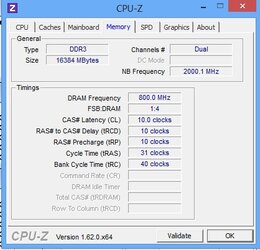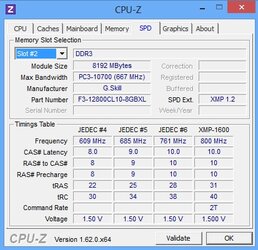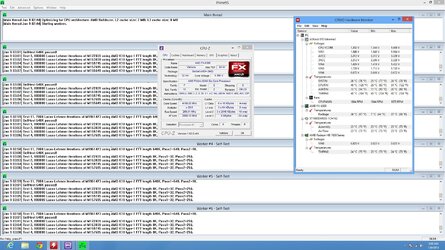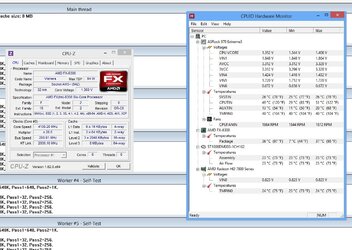I am completely new to overclocking, but after doing some research on this website of CPU's that resemble mine here is what I was able to come up with:
So far I am stable at 4.1Ghz, with vCore set to 1.4v. All memory is clocked in correctly. When I try to go above 4.1 it takes an awful lot of vcore increase in order to get it stable, although my bios says that my CPU max voltage is 1.55v. I had it raised all the way to 1.43 or 1.44v and was still having cores drop out on Prime 95 after around 15 minutes or so. Temps are very stable and I have not seen anything higher than 52C as of yet. Would like some info on how I could possibly get to 4.2 or maybe even past that, but still be completely stable. Here is my setup:
CPU: AMD 6300
CPU Cooler: CM Hyper 212 Evo
PSU: Corsair CX500 (500 watt)
MOBO: ASRock 970 Extreme3
RAM: G.SKILL Ripjaws X Series 16GB (2 x 8GB) 240-Pin DDR3 SDRAM DDR3 1600 (PC3 12800)
GPU: HIS Radeon HD 7850
SSD: OCZ 128GB
HDD: Seagate 1TB 7200 RPM
Optical: ASUS CD/DVD Burner
Case: Rosewill Challenger (2x 120mm fan, 1x 140mm fan)
My screenshots are attached, any help would really be GREATLY appreciated!
So far I am stable at 4.1Ghz, with vCore set to 1.4v. All memory is clocked in correctly. When I try to go above 4.1 it takes an awful lot of vcore increase in order to get it stable, although my bios says that my CPU max voltage is 1.55v. I had it raised all the way to 1.43 or 1.44v and was still having cores drop out on Prime 95 after around 15 minutes or so. Temps are very stable and I have not seen anything higher than 52C as of yet. Would like some info on how I could possibly get to 4.2 or maybe even past that, but still be completely stable. Here is my setup:
CPU: AMD 6300
CPU Cooler: CM Hyper 212 Evo
PSU: Corsair CX500 (500 watt)
MOBO: ASRock 970 Extreme3
RAM: G.SKILL Ripjaws X Series 16GB (2 x 8GB) 240-Pin DDR3 SDRAM DDR3 1600 (PC3 12800)
GPU: HIS Radeon HD 7850
SSD: OCZ 128GB
HDD: Seagate 1TB 7200 RPM
Optical: ASUS CD/DVD Burner
Case: Rosewill Challenger (2x 120mm fan, 1x 140mm fan)
My screenshots are attached, any help would really be GREATLY appreciated!




